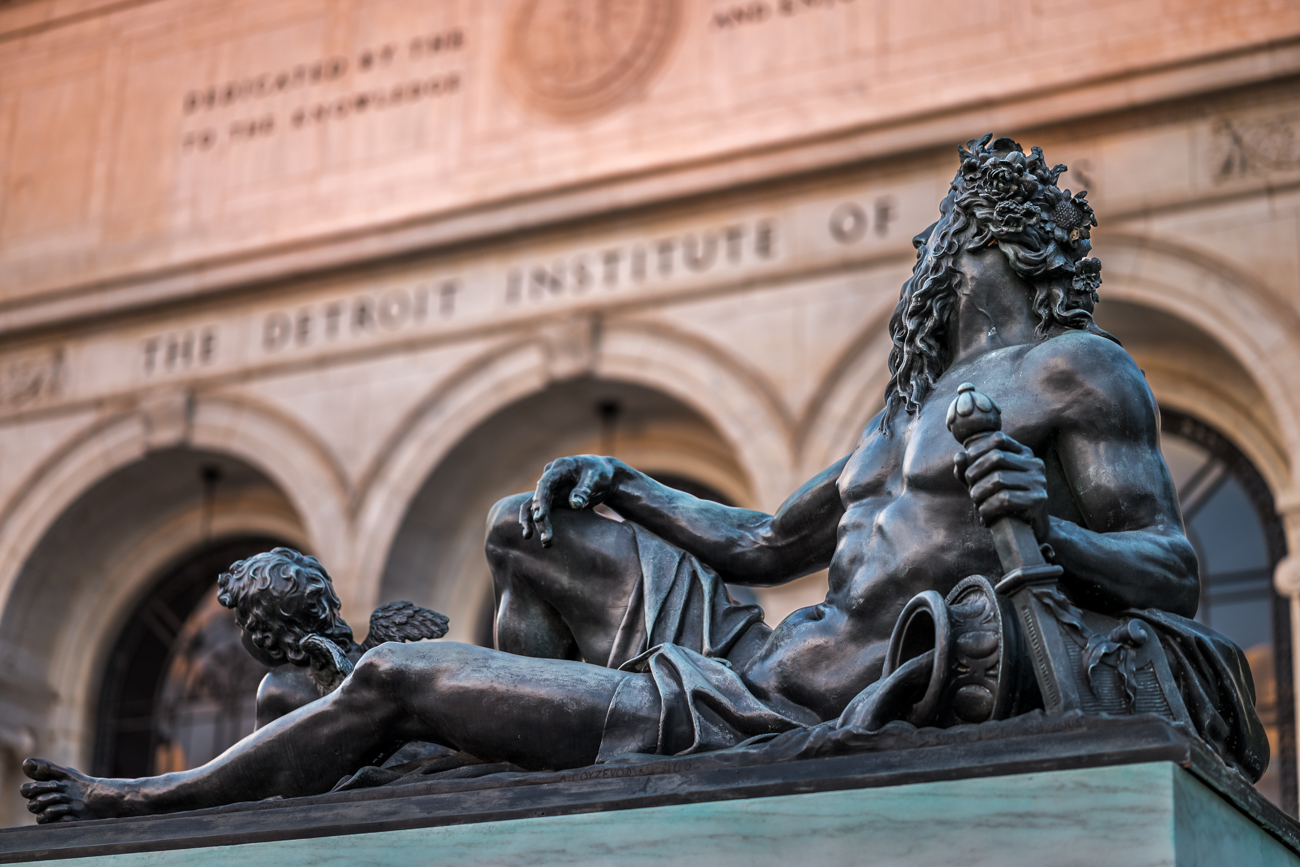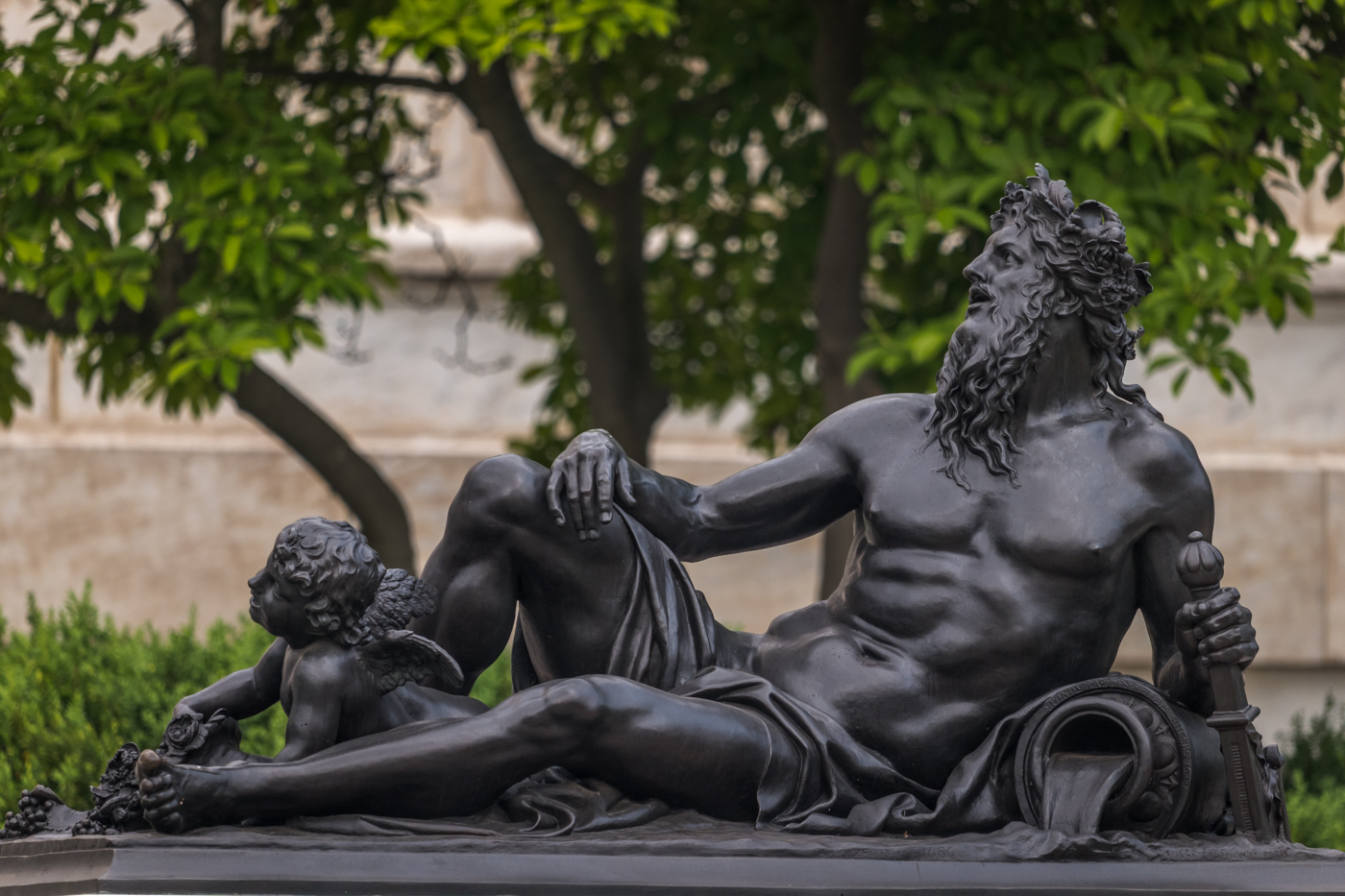Detroit Institute of Arts - Photos Decor Detail
Detroit Institute of Arts

Nymph and Cupid - by Philippe Magnier

Auguste Rodin sculpture "The Thinker" outside the Detroit Institute of Arts

One out of the three classic sculptures that grace the main entrance on Woodward Avenue.

Front facade detail

Garonne River God by Antoine Coysevox. Both bronze statues are copies of statues created for the gardens of Versailles.

Donatello's St. George - a bronze casting of a marble statue created for the Guild of Armorers and Sword makers in Florence. The Saint was chosen by the guild to represent the Florentine spirit and to provide an example of the city's young men, who had the reputation for being wild troublemakers. The saint provided a similar example to the young men and gangs of Detroit during Prohibition, when more than 90 percent of the bootleg liquor entering the US came through Detroit.

Michelangelo's Dying Slave - a casting of a marble sculpture in the Louvre, created to adorn the tomb of Poe Julius II, one of the most influential art patrons of the Italian Renaissance.

"The Thinker" was purchased by Horace H. Rackham in 1922 and placed outside the original art museum. From there it was moved inside the DIA in 1927. It was moved back outside in the early 1930s close to the Woodward Ave. sidewalk. Moved closer to the DIA building in the late 1950s. It was repositioned again when the stair-step fountain was added in 1981.

Dionysus and revelers above the east entrance to the theater.

A tragedy mask from the building's south facade where the museum is located.

A comedy mask, also from the south facade of the theater

A mythical hero from a window arch

Nike carries the lamp of knowledge

Detail shot of ornament above Woodward Ave. entrance